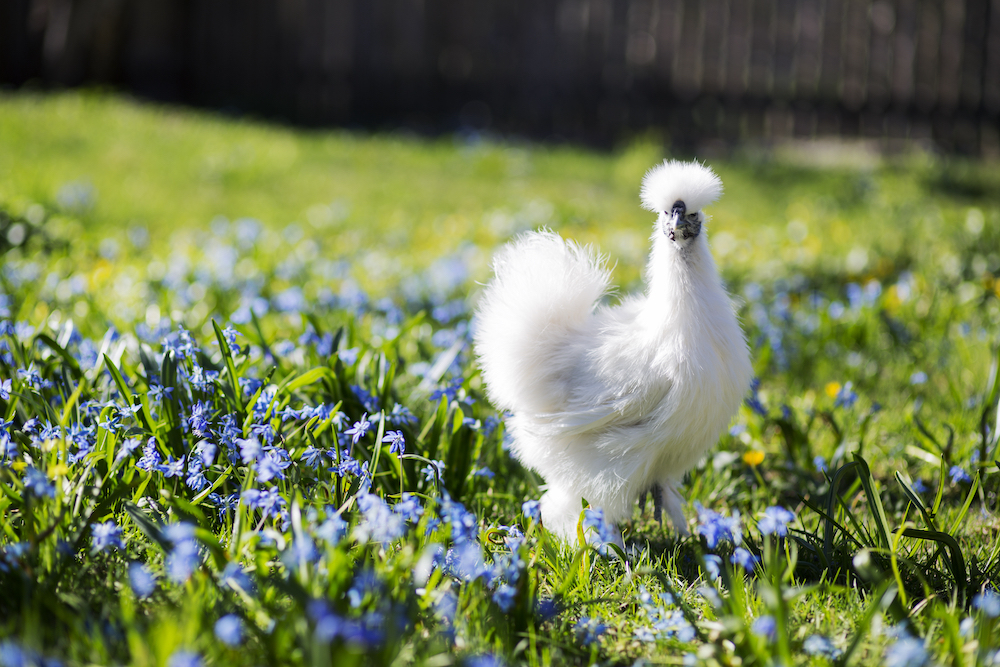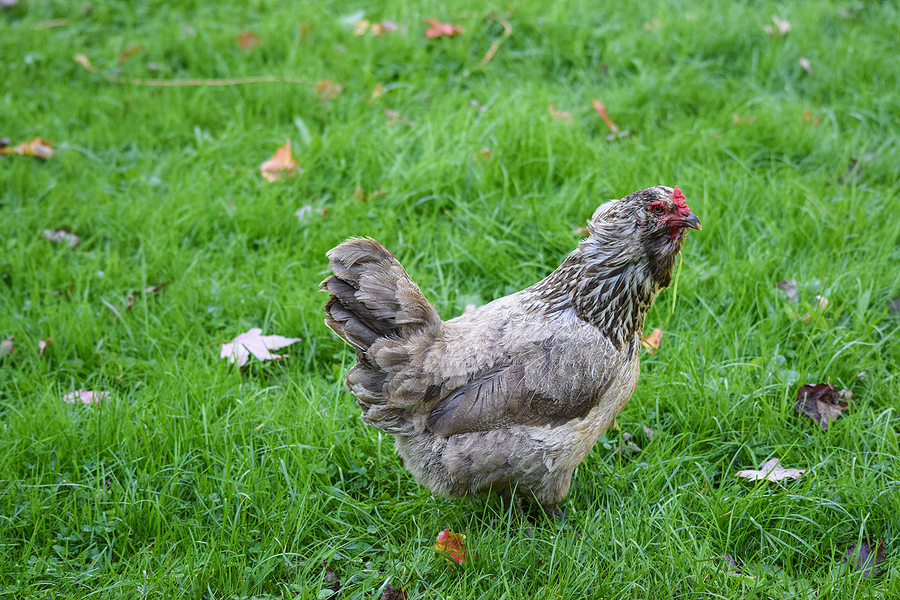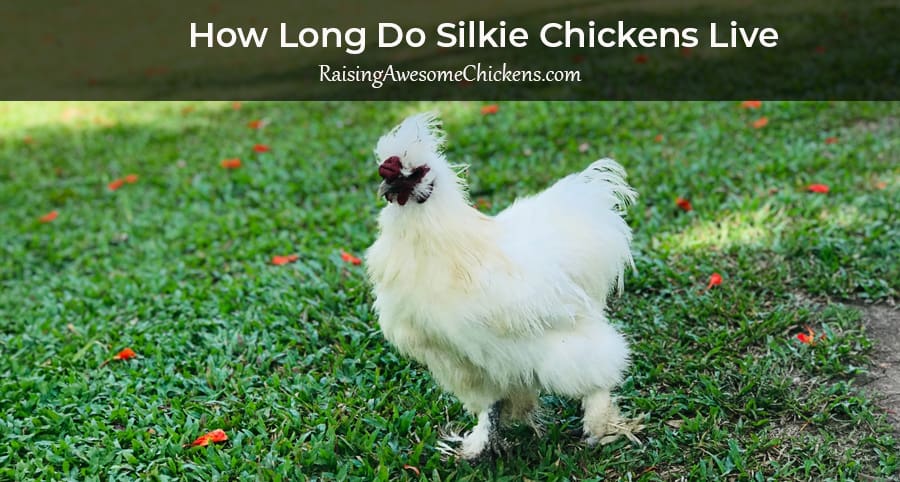Last Updated on February 23, 2024 by AwesomeChickens
Named for the purported landing place of pilgrim settlers back in the 17th century, the Plymouth Rock chicken is an American breed that was first shown in Boston back in 1849. It was bred with many positive traits that helped to make it the most popular chicken in the US for the late 19th and early 20th centuries.
Plymouth Rocks were originally bred as dual-purpose chickens both for their meat and eggs. They are also noted for their sweet and friendly personality and becoming quite attached to their owners. They also feature a distinctive barred color pattern in their feathers that stands out among common chicken breeds.
Table of Contents
Breed Origins
The Plymouth Rock chicken is perhaps the original American heritage breed for chickens. It may not technically be the oldest in years, but it’s the oldest one that people know about and remembers — a product of good marketing, effective naming, and strong, attractive features of the breed.
The idea was simple when creating Plymouth Rock chickens. Farmers in Massachusetts and the wider New England area needed a bird that could withstand the cold winters and feel comfortable in the hot local summers. In addition, they needed solid egg layers and a dual-purpose breed that could also provide meat if required. Their search for such a bird was the Plymouth Rock chicken.
The exact origins remain uncertain, but many experts believe the original line was bred from Black Java and Dominique chickens. Unlike birds such as the Orpington, the original creator is unknown and unverified, though there have been many claims over the years. A rather curious period in the 1800s saw the chicken disappear entirely before reappearing in 1869.
During the onset of World War II, there was a natural assumption that the Plymouth Rock chicken would play a critical role in curbing rationing in the country. Still, as it happens, the government had discovered what they found to be more productive breeds and seemingly fell out of love with their national poultry treasure. Fortunately, farmers and amateur chicken keepers have kept faith with Plymouth Rock, and it continues to be America’s true chicken sweetheart.
Appearance
The Plymouth Rock comes in 7 color varieties, but there’s only one that counts, and that’s the Barred Plymouth Rock with its distinctive dual-color plumage in a mix of dark and light colors. Blue, Buff, Columbian, Partridge, Silver-Penciled, and White are among the other recognized color varieties. The legs are yellow and bare, and on the head, you’ll find a broad beak, a single comb with 5 points, a red ear lobe, and a red wattle.
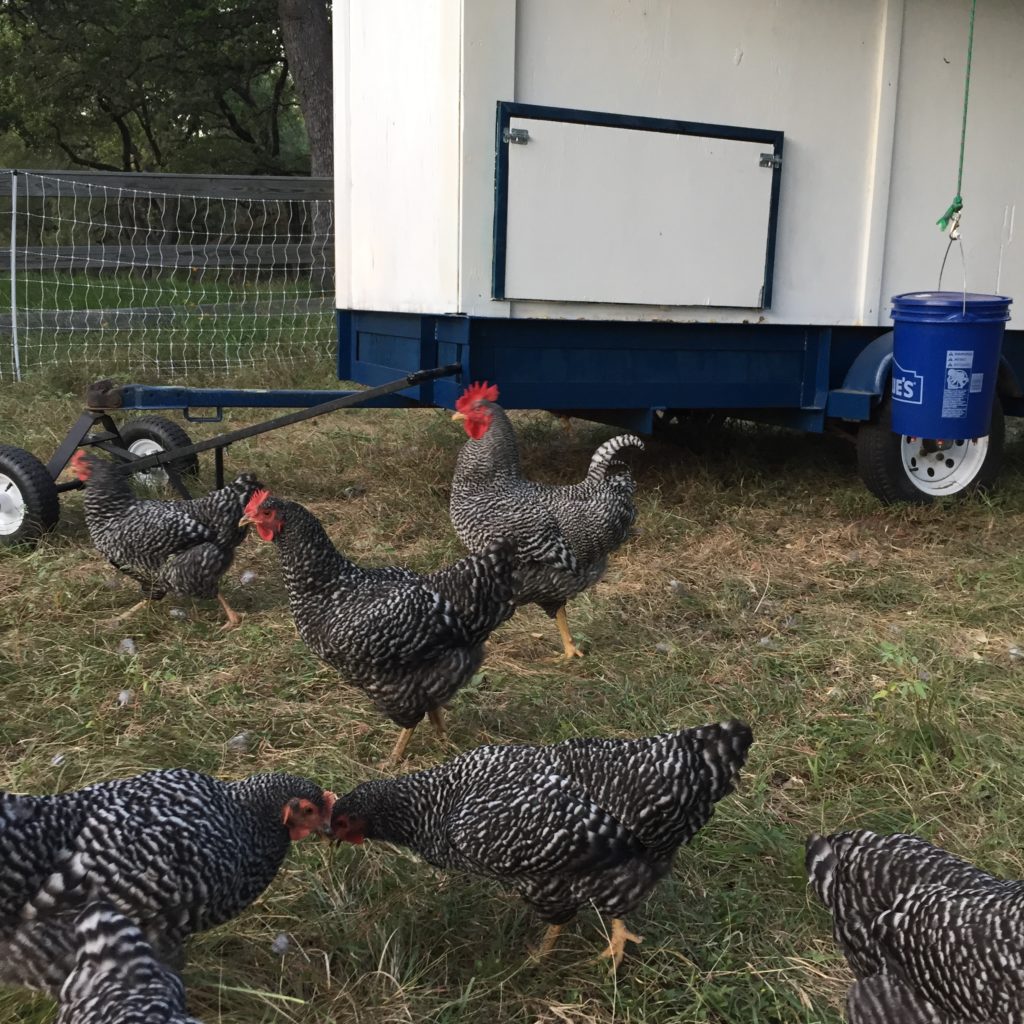
The Plymouth Rock comes in bantam and standard sizes. Bantam hens weigh up to 2.5-lbs, and standard hens up to 6.5-lbs. For roosters, bantams can reach up to 3-lbs, and normal roosters up to 7.5-lbs. This makes them lighter than some other meat-giving chickens like the Orpington, but the meat is known in particular for its good flavor.
Temperament
Plymouth Rock chickens are well known for their gentle and kind temperament. But, there’s a reason they have become a real ‘sweetheart’ chicken in the US and beyond. Like Easter Eggers, they are quite loving and affectionate, and owners who spend time with their chickens will soon find that their Plymouth Rocks are sitting in their laps waiting for petting.
They’re naturally very curious and docile, which makes them very suitable for those who are raising chickens for the first time. They aren’t flighty around humans and are the perfect bird for teaching young children about animal care.
While they are strong layers (see below), they share a tendency to go broody with breeds like the Orpington. However, if you are hoping to maintain your flock with some chicks, this will work to your advantage because the Plymouth Rock hen is also a very caring and attentive mother. Owners rarely have to step in to incubate the eggs. Plymouth Rocks are good sitters and will care for their young well.
They’re reasonably quiet, and their noise is more like a gentler cooing sound than a loud clucking sound. Still, you might not want to have large numbers of them in a densely-populated neighborhood, but a smaller number would be no problem. They also get along pretty well with other chickens, including the roosters.
Egg Laying
If you raise Plymouth Rocks from chicks, expect them to start laying from around 18 weeks of age. They deliver between 200 and 300 eggs per year, with a reported average of 230. The eggs themselves are light brown and “Large” in their size category.
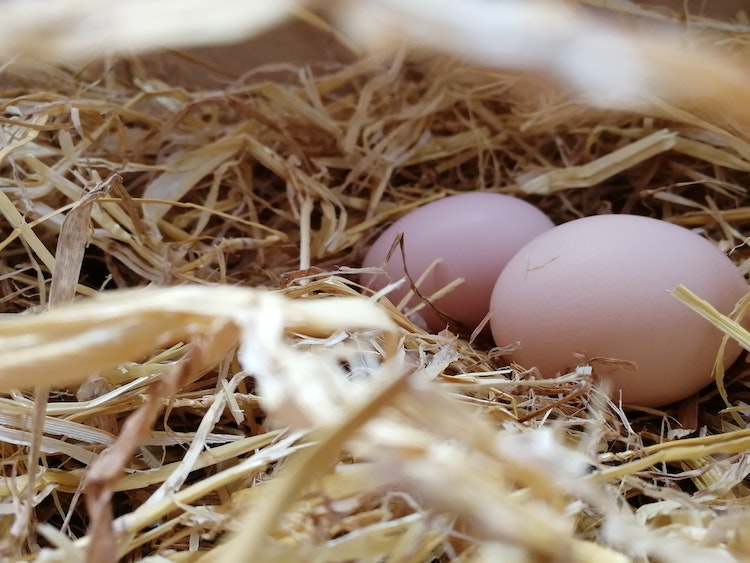
Above, we mentioned the tendency to go broody. The hens will remain relatively docile while broody, but if you are collecting eggs during such a time, it might still be a good idea to wear protective gloves just in case. On the other hand, if you are going to allow the hens to hatch chicks, you needn’t worry about their well-being because Plymouth Rocks are good parents.
The best egg-laying years are from 18 weeks to 3 years. After that, the hen’s productivity will slowly go down until they die, usually around age 8-10.
Health Issues
The natural hardiness of the breed to cold and hot weather helps to make them an overall low-maintenance breed when it comes to health concerns. However, one thing to watch for is intestinal parasites, so managing parasites in advance is a good thing to do, so learn about that in advance, especially if you’re a beginner.
Some diseases known to affect Plymouth Rock chickens more than others are Vent Gleet and Vent Prolapse, and Pododermatitis. All of these ailments are relatively minor, and if you catch them early will be easily treatable. The best sign you can look for is a sudden drop in their egg-laying capacity. While egg-laying does go down with age after three years, as we’ve mentioned, it is gradual. A sudden drop in egg production is very noticeable with Plymouth Rocks, so take that as a sign to get in touch with your local vet.
Treat your Chickens Good!
Other Information to Know
Probably the best thing about the Plymouth Rock chicken is how easygoing and low-maintenance it is as a breed. Nowadays, people are increasingly interested in rearing chickens and planting home vegetable gardens to reduce food dependency on what is now seen as a vulnerable supply chain. In the case of chickens, there’s an added factor of pet-like companionship and the fact that one doesn’t need an entire farm to raise a small flock. They need a solid, dependable chicken breed, and Plymouth Rocks fit the profile to do any of this.
First, their docile temperament and relatively quiet demeanor make them perfect for any homestead. They grow to love their owners and are easily pleased with a bit of space to range around in and a comfortable place to sleep at night. They are also very decent foragers and are quite happy in their foraging, which means you don’t have to give them chicken feed all the time. Allowing them space to do their thing is beneficial for them in many ways, and you can save your feed for the winter months.


